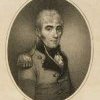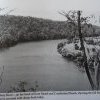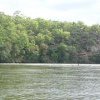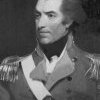1790s
1790
The Koori leader, Maugaron comes to Sydney to protest the loss of his peoples’ lands. This is the first recorded formal protest known in Australia. Phillip writes, “Certain it is that wherever our colonists fix themselves, the natives are obliged to leave that part of the country.” Karskens, The Colony, pp. 454-5.
Maugaron’s children, Brrbrrong, Ballooderry, Yerranibegoruey, Warraweer and Wogol go to live in Sydney with the white people. Two, possibly three of these children, die young of disease or violence. Maugaron and his second wife Tadyera are forced from Parramatta. They move east to Kissing Point, now deserted perhaps because of the smallpox. They name their newborn son Bideea Bidgee.
1791
Yarramundi, (Yellomundee) the Boorooberongal warrior and Koradji (clever man) welcomes Phillip and Lieutenant Tench to his country. Watkin Tench describes this meeting: “We halted for the night at our usual hour, on the bank of the Hawkesbury River. Immediately that we have stopped, our friend (who had already told us his name) Gombeere introduced the man and the boy from the canoe to us. The former was named Yellomundee, the later Deeimba.” Both Gombeere and Yellomundee are Koradji (special or clever men and women who had great cultural and spiritual knowledge and skill).
Yellomundee’s daughter (as yet unborn) will be Maria Locke, later well known at the Blacktown Native Institute as a gifted student, and matriarch of many Hawkesbury River Region Darug people.
1792
The British farmers now penetrating Darug country have lost their earlier crops in the poor sandstone soils of the coast. The colony is facing famine and its administrators are urgently looking for fertile land to feed the colonists. They seize the Darug yam fields of the Hawkesbury River, forcing them into armed resistance as they see their basic resources totally removed from their control.
1793
1794
Lieutenant-Governor Grose sends the first group of settlers to take up farms in Darug territory on the banks of the Hawkesbury River near Green Hills (Windsor), 24 miles from Parramatta. In April Judge Advocate Richard Atkins refers to the beheading of two Koori men at Toongabbie. ‘The head of one is brought in and the Lt. Govr [Major Francis Grose] has preserved it, as a present for Dr. Hunter.’ In London, Surgeon John Hunter has died, so the head is sent to Sir Joseph Banks, who later provides the skulls of two ‘New Hollanders’ to the German anatomist Johann Friedrich Blumenbach in Gottingen. (Source: Richard Atkins, Journal, 15 April 1794).
In September, two settlers are attacked by Aboriginal people and badly wounded. A few days later, settlers pursue Aboriginal people who have stolen clothing and provisions, killing ‘seven or eight of the plunderers on the spot’. David Collins believes that ‘many natives had been wantonly fired upon’. Raids on the maize (corn) crops are becoming more frequent because they are planted on the same land where once grew the yam fields. Non-military reprisal parties continue, at first by convicts. Payback continues between 1794 and 1799. Collins presents the Hawkesbury frontier as ‘utterly lawless’. The area around Richmond Hill has become the third area of settlement after Sydney Cove and Parramatta. 22 settlers are living here.
The area around Richmond Hill has become the third area of settlement after Sydney Cove and Parramatta. 22 settlers are living here.
1795
John Wilson (Bun-bo-è) and William Knight, a runaway convict, join ‘the natives at the river’ [Hawkesbury]. They are prevented from dragging away Aboriginal girls ‘whose age could not have been beyond nine or ten years’. Knight and Wilson are locked in cells, but escape. (Collins [1798] 1975:355-6).
The Battle of Richmond Hill takes place between large numbers of Darug and troopers. A memorial garden is later established at the St John of God Hospital, 177 Grose Vale Road, North Richmond.The battle is fought between the Darug people and the New South Wales Corps which also included several armed settlers. It is considered to be the first recorded battle between Aboriginals and settlers.
The settlers have arrived in Pitt Town Bottoms to help overcome the desperate need for good farming land and food in the new colony. A large group of Aboriginal people at the Hawkesbury attack settlers. The Reverend F. Palmer writes, ‘The natives of the Hawkesbury lived on the wild yams on the banks. Cultivation has rooted out these, and poverty compelled them to steal Indian corn to support nature. The unfeeling settlers resented this by unparalleled severities’. (quoted, M. Martin, On Darug Land. An Aboriginal Perspective, 1988, p. 42) Acting Governor Patterson reports that the Aboriginal hostility is so great that he may have to abandon a settlement on the Hawkesbury River. He has now 60 soldiers guarding the area. Historical Records of Australia (HRA), Series 1, p. 499.
1796
The Darug severely wound a man travelling by boat on the Hawkesbury River. John Wimbow, who is living with an Aboriginal woman at the Hawkesbury River, shoots and kills John Caesar for a reward of five gallons of rum.(Source: Collins [1798] 1975:381). Hawkesbury settlers agree they will assemble for mutual protection when Aboriginal people are seen near their farms. ‘It has been intimated to the governor, that two white men had been frequently seen with the natives... and were supposed to direct and assist in those acts of hostility by which the settlers had lately suffered,’ writes Collins.
The vast majority of the yam beds have been destroyed and replaced with crops. When Koori people attempt to harvest or burn the crops growing on the riverbanks they are driven off.
The first party of settlers in the region of Sackville Reach is driven back by intense Aboriginal attack. Their isolation and the narrow river flats hard up against steep rocky ridges make the farmers easy targets. Karskens, p. 449. Governor Hunter requests more guns for the settlers. Cottages are burned down and the soldiers set out from Parramatta to Prospect. If the farmhouses are well protected, the Darug attack the maize fields instead. Often an attack on a farm even if beaten off is punished by “payback”, that is, the murder of another person, usually a convict, soon afterwards.
1797
Pemulwuy seems to begin a campaign to drive the settlers from what is now western Sydney. As the war continues many settlers have clear relationships with Aboriginal people. They know the different clans and who is related to whom and want to maintain, if not friendly, then at least safe relations with them. A number of brutal killings take place in the region of Argyle Ridge on the Hawkesbury River. Patterson reports that many unemployed settlers have joined the natives “and have taught them how to annoy and distress the settlers”. He has had to arm the herdsmen because the Aboriginal warriors are “entirely led by the villains who have got amongst them.” HRA, Series 2, p. 24. As the war continues, many settlers aim for amicable relationships with Aboriginal people. They often know the different groups and who is related to whom; they want to maintain, if not friendly, then at least safe relations with them.
Pemulwuy concentrates his forces on the older farms in the Parramatta area, at ‘Toongabbie’. The settlers form a punitive party against him. 100 Aboriginal warriors come to Parramatta to confront the soldiers and settlers. Local people recall him marching into town as if in imitation of a detachment of soldiers. He appears to be in a great rage. Pemulwuy is captured, shot, taken into Parramatta hospital and expected to die. Within days he rises up and escapes. He is seen a month later at Botany Bay with the tether still around his leg. Governor Hunter tells Pemulwuy that he is not angry with him. But by April the attacks have started again, this time in the Lane Cove region. A year later the campaigns begin on the farms on Georges River. Karskens, The Colony, pp. 475-477.
By now Pemulwuy has acquired an extraordinary reputation for supernatural powers. He is believed to be immune to gunfire. His attacks continue throughout Parramatta, Prospect and the Georges River. Crops are set ablaze and now flocks of sheep are targets also. Karskens remarks, “These were more than a series of stray skirmishes. This was a serious war, and the response was serious.” Karskens, The Colony, p. 478.






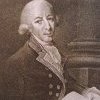
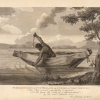
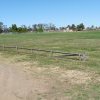
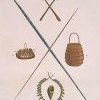
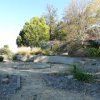

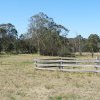
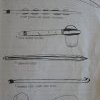
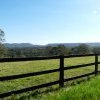


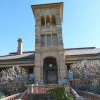
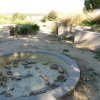
.thumbnail.JPG)
